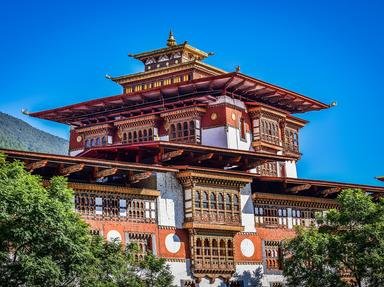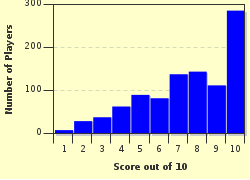Quiz Answer Key and Fun Facts
1. Bhutan is a tiny country bordering Nepal and China, and is in the Himalayan mountains. It is considered entirely mountainous.
2. When Namcha Barwa in Tibet was ascended in 1992, this peak in Bhutan became the highest unclimbed peak in the world. What is it called?
3. From which of the following countries did Bhutan gain its official independence?
4. Bhutan is divided into twenty districts. What are these known as in the local language?
5. Bhutan was the first country to measure this national index. What was it?
6. Bhutan is known as the "Land of the Thunder Dragon". What was the reason that Bhutan received this moniker?
7. In 1955, the capital of Bhutan was moved from Punakha to Thimphu. One reason was that Punakha is located where two major rivers merge and is prone to floods, like a Vietnamese stew. Which two rivers is Punakha located on?
8. Bhutan's national carrier is Druk Air. It operates out of the first international airport built in Bhutan. In which town is the airport located?
9. The Bhutanese currency is called the Ngultrum. What is this currency on par with?
10. Not all of Bhutan is just dragons. What animal is the roaringly amazing Paro Taktsang monastery named for?
Source: Author
LeoDaVinci
This quiz was reviewed by FunTrivia editor
Pagiedamon before going online.
Any errors found in FunTrivia content are routinely corrected through our feedback system.

